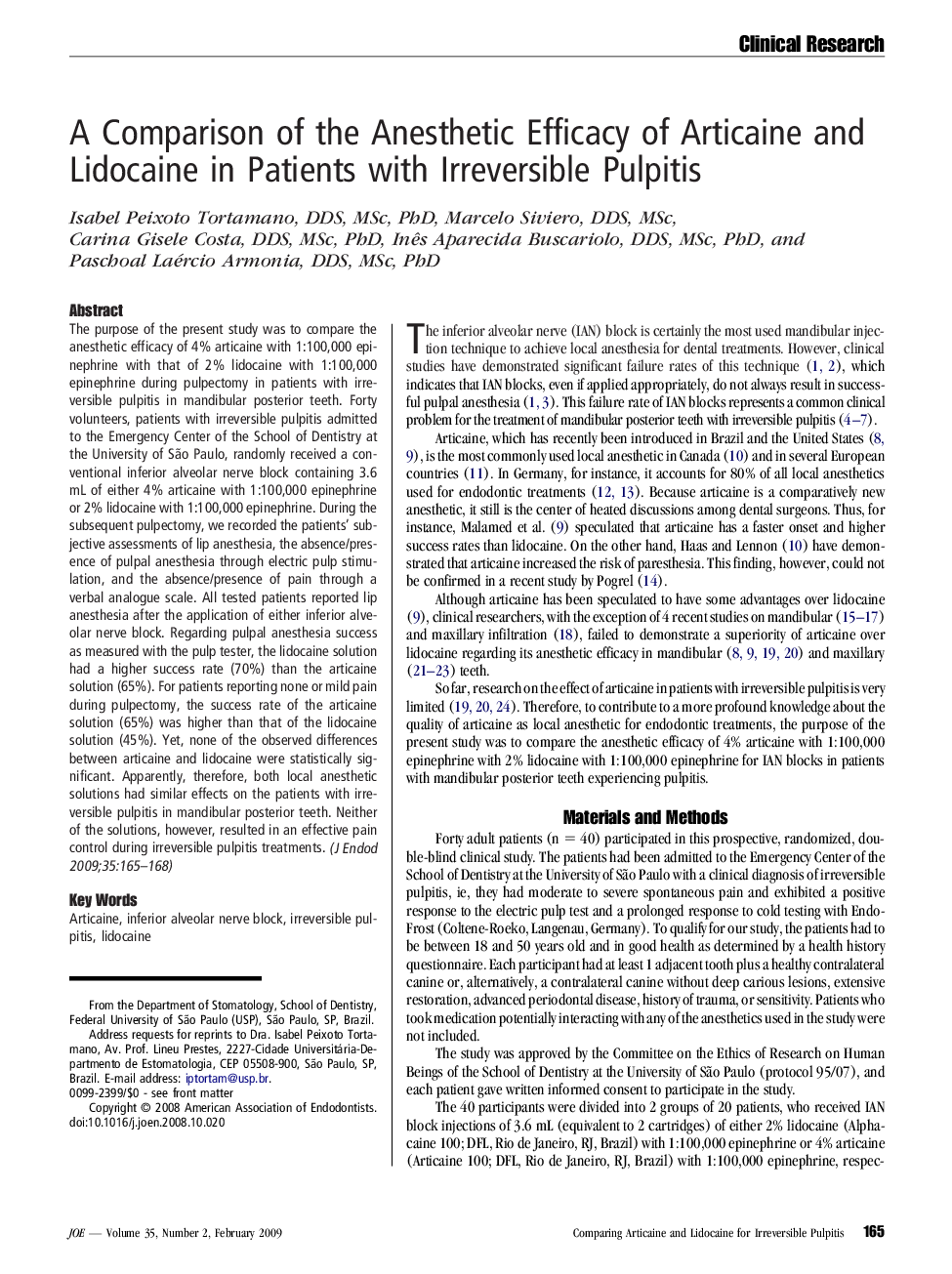| Article ID | Journal | Published Year | Pages | File Type |
|---|---|---|---|---|
| 3149623 | Journal of Endodontics | 2009 | 4 Pages |
The purpose of the present study was to compare the anesthetic efficacy of 4% articaine with 1:100,000 epinephrine with that of 2% lidocaine with 1:100,000 epinephrine during pulpectomy in patients with irreversible pulpitis in mandibular posterior teeth. Forty volunteers, patients with irreversible pulpitis admitted to the Emergency Center of the School of Dentistry at the University of São Paulo, randomly received a conventional inferior alveolar nerve block containing 3.6 mL of either 4% articaine with 1:100,000 epinephrine or 2% lidocaine with 1:100,000 epinephrine. During the subsequent pulpectomy, we recorded the patients' subjective assessments of lip anesthesia, the absence/presence of pulpal anesthesia through electric pulp stimulation, and the absence/presence of pain through a verbal analogue scale. All tested patients reported lip anesthesia after the application of either inferior alveolar nerve block. Regarding pulpal anesthesia success as measured with the pulp tester, the lidocaine solution had a higher success rate (70%) than the articaine solution (65%). For patients reporting none or mild pain during pulpectomy, the success rate of the articaine solution (65%) was higher than that of the lidocaine solution (45%). Yet, none of the observed differences between articaine and lidocaine were statistically significant. Apparently, therefore, both local anesthetic solutions had similar effects on the patients with irreversible pulpitis in mandibular posterior teeth. Neither of the solutions, however, resulted in an effective pain control during irreversible pulpitis treatments.
